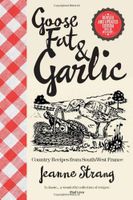Advertisement
Les Truffes
Published 1991
There is one fungus, if that is the right name for it, which is not only the most sought-after speciality of the South-West but cannot be rivalled for quality anywhere else. Truffles are becoming increasingly important in Provence and Italy; a poor relation grows in Spain and is increasingly imported into France to supply an impossible demand; there is, however, no real substitute for la truffe noire of the Périgord and Quercy. Aptly christened ‘black diamonds’, they sell in the local markets for £15 to £30 a half kilo; almost double in the smart épiceries of Paris. Perhaps our Puritan instincts suggest that no foodstuff can be worth that price? In any case those of us who have eaten them have more probably tasted them in their tinned form, when no amount of care or expertise can prevent their losing a large part of their flavour. A fresh truffle is a true marvel of the soil, incredibly pungent – l’odeur est déjà une fête – and only needing very small quantities to flavour a large dish. It is no myth that one truffle put overnight in a sealed box of eggs will flavour the eggs through their shells. We once brought three truffles home to England in a paper bag in the boot of the car. When we stopped for the night at Chartres the hotel porter lifted the tailgate of our car to extract our luggage and cried ‘Mon Dieu! Vous êtes venus du Périgord!’


